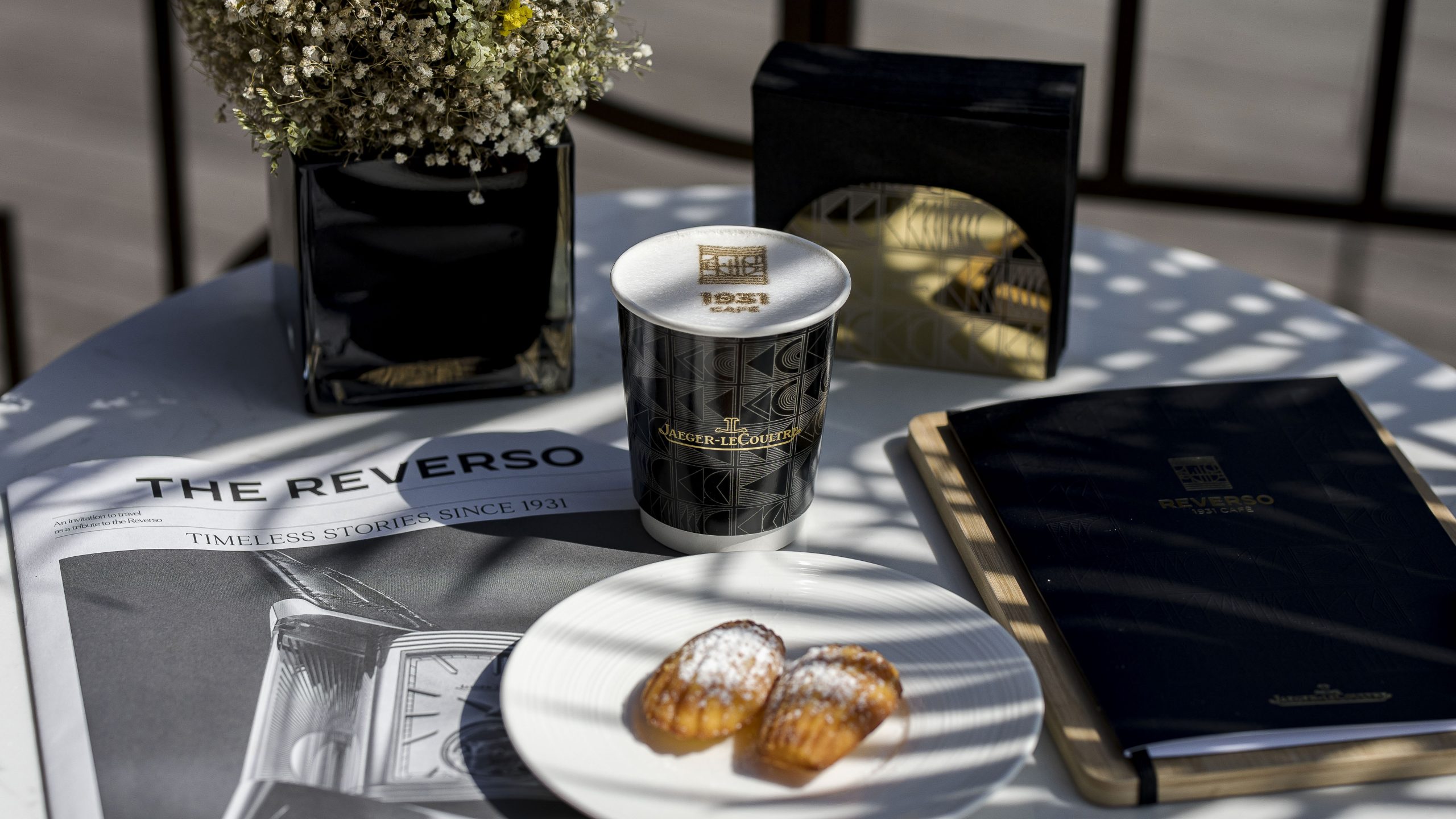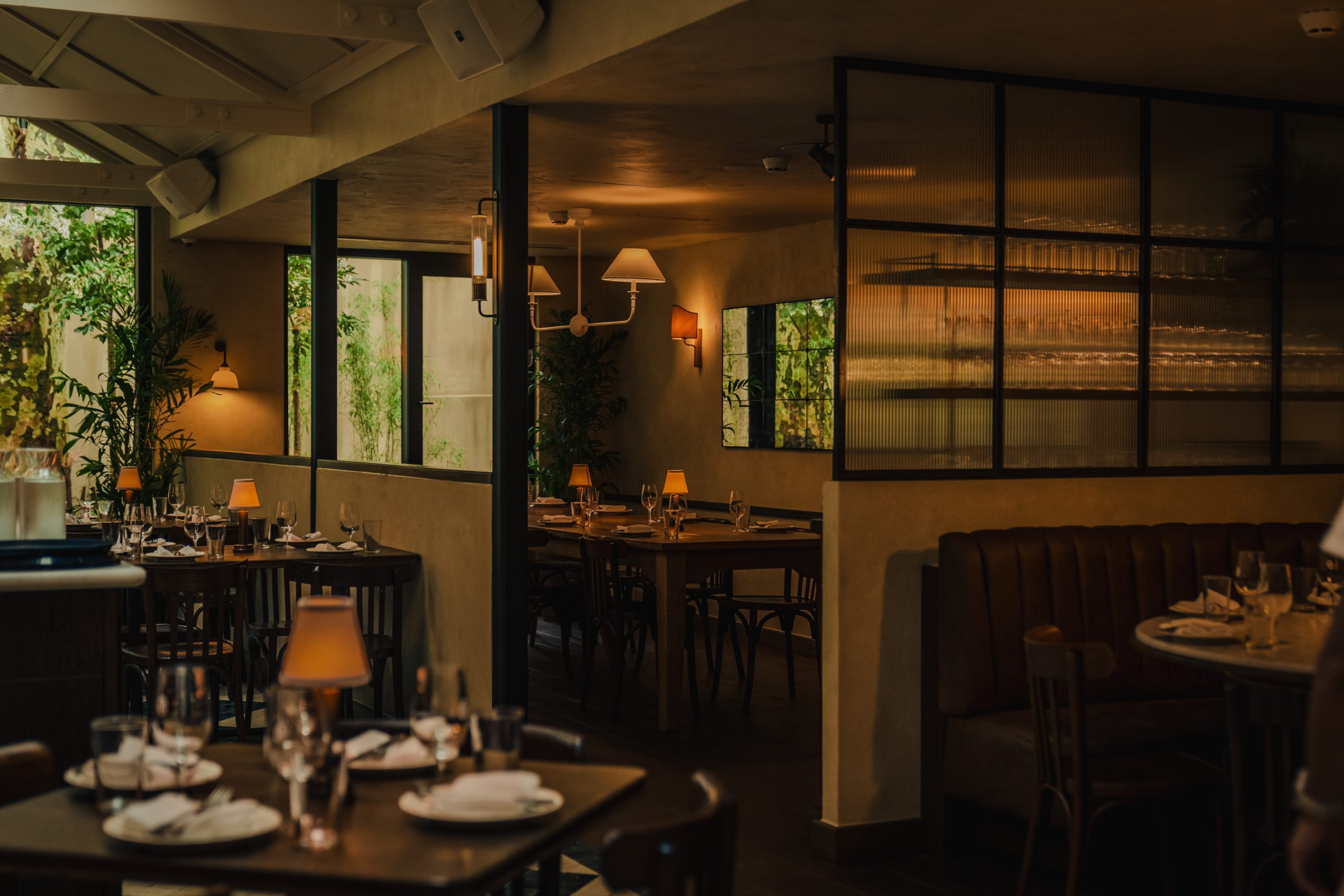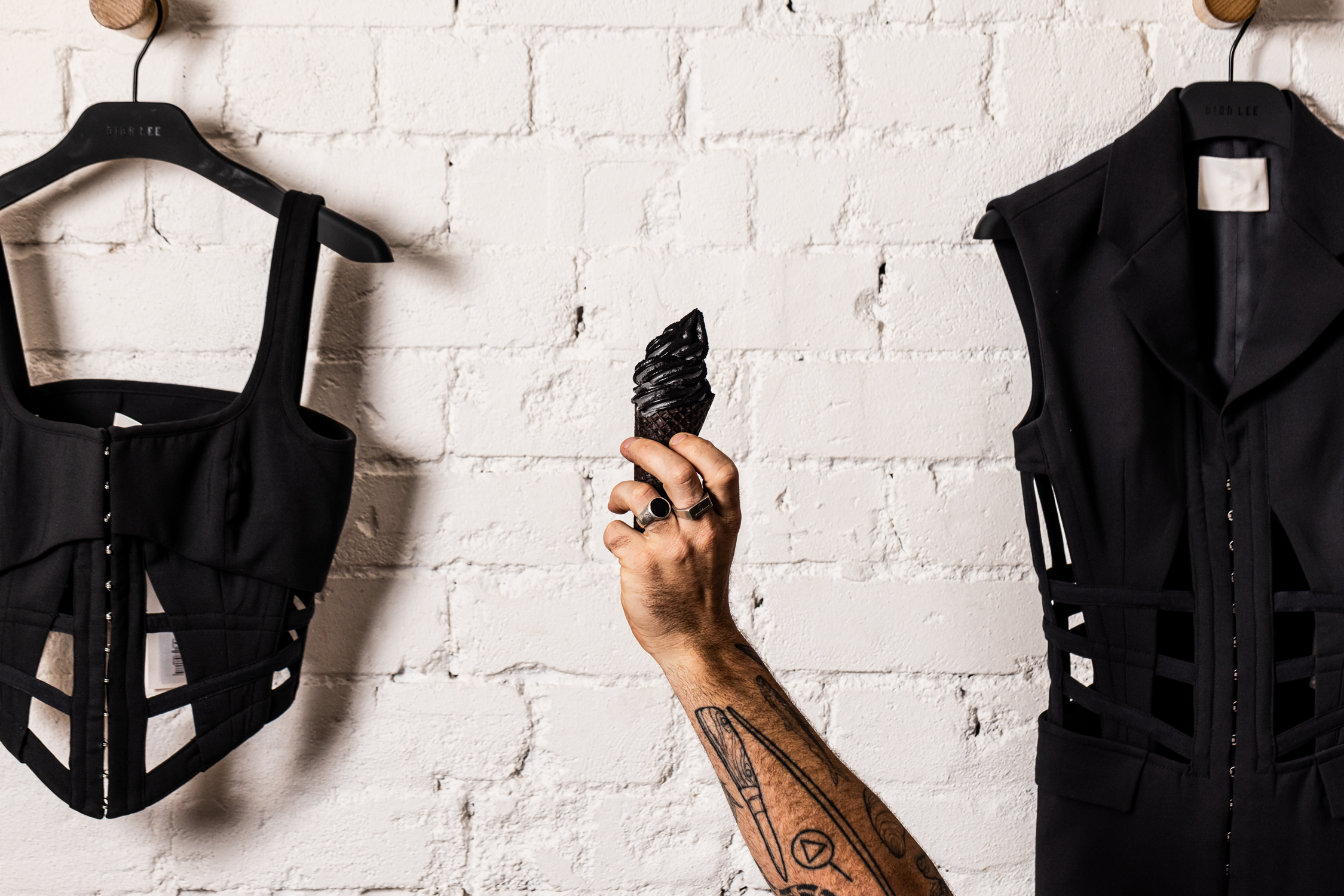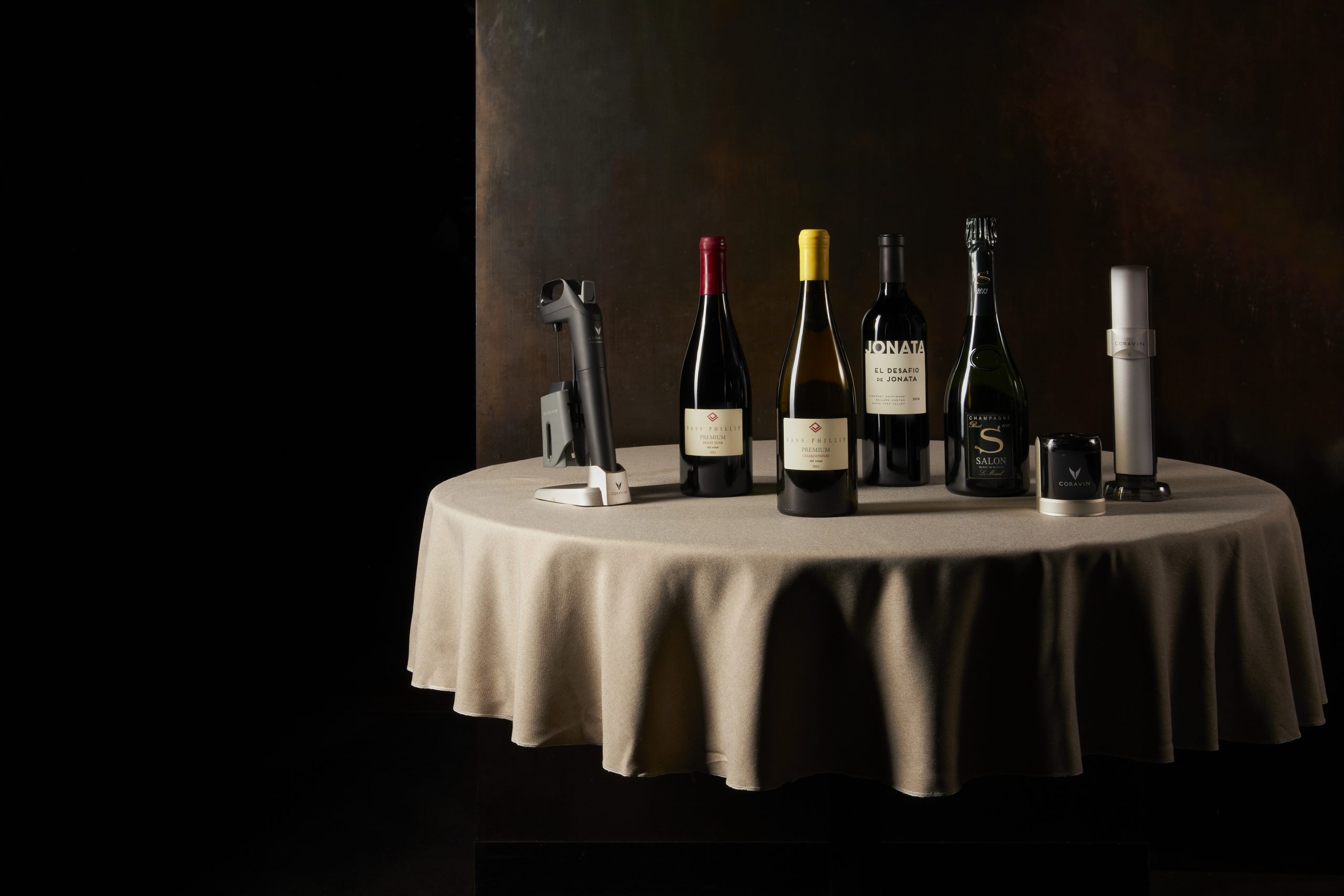
Omega’s New Minute Repeating Chronographs Are Powered By Mind-Blowing New Movement
The Co-Axial Master Chronometer Calibre 1932 is the most complicated movement the company has ever produced.
Related articles
If you’ve been around the watch world long enough, you’re no doubt familiar with some of the more esoteric complications, such as split-second chronographs and minute repeaters. The former, for the uninitiated, features two second hands and is used to time successive events, while the latter incorporates tiny gongs and hammers to audibly chime the time. Each is difficult to execute — especially the minute repeater — and each is part of the catalogue of most of the high-end Swiss watchmakers.
Omega has long been a master of both of these complications: Its first minute repeater was an enamel dialled beauty from way back in 1895, and it created split-second chronographs to time the 1932 Olympics in Los Angeles. These days, of course, the brand is known mostly for its “tool watches” such as the Speedmaster and the Seamaster. But Raynald Aeschlimann, Omega’s president and CEO, was hardly keen to rest on those laurels. Six years ago, he began pushing the Swatch Group’s flagship watchmaker into bolder territory, challenging Omega to delve into previously uncharted waters with an entirely new complication.
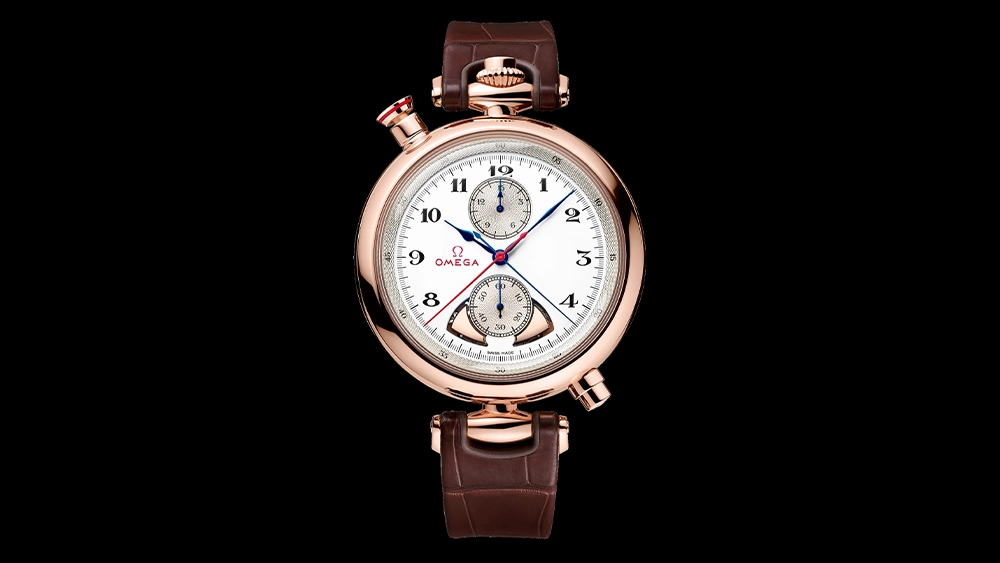
Omega
Well, here you have it: The appropriately titled Co-Axial Master Chronometer Calibre 1932. This incredible new calibre—the result of a single Omega watchmaker’s efforts—is beyond anything the maison has ever designed and built before, with respect both to conception and engineering. The 1932 is a split-seconds chronograph that audibly chimes elapsed time, and it does so using a METAS-certified movement that runs at 5 Hz, which is the territory of high-beat movements such as Zenith’s famed El Primero. It utilises a mind-blowing 575 components without counting those for the gongs, and required the filing of 13 patents. (Four more were necessary for the case of one of the watches into which the movement is fitted—more on that in a moment.)
As it wasn’t possible to simply re-engineer another Omega movement to run at 5 Hz and include this new complication, the brand’s engineers had to begin from scratch, resulting in the most complicated Omega calibre ever produced. Working with Blancpain—Omega’s sister company within the Swatch Group—the brand was able to develop a sort of mechanical computer to seamlessly mesh the chronograph and minute repeater functions together.
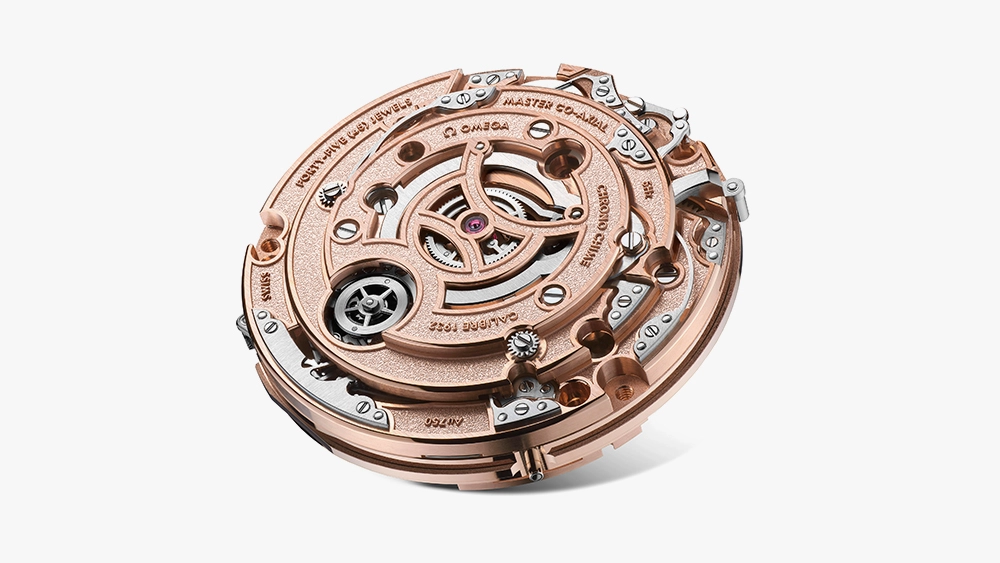
Omega
Having it run at 5 Hz was essential, as the watch needed to display 1/10ths of a second, like the split-second chronograph stopwatches from the 1932 Olympic Games. Additionally, Omega’s team needed to add a chiming section with a security function that would prevent the wearer from accidentally repressing the wrong actuator. Without such a safety system, it could potentially damage such a delicate movement.
But there’s more. In order to achieve Master Chronometer status, Omega had to use 50 non-ferrous components, replacing typical metal parts with silicon and other alternatives. The manufacture managed all this, and with flying colours: The finished movement is beautiful to behold, and unlike anything the brand—or any other brand, frankly—has released before. It features both satin brushing and mirror-polished textures, as well as nearly 50 grams of gold. And it sounds like a dream, with three separate gong sequences that ring the time. (A low gong sounds the minutes, a double-gong sounds 1/6th-minutes, i.e. 40 seconds, and a high gong sounds the seconds.)
But enough about a movement. Where does this calibre fit into the greater Omega catalogue? The answer is actually two different watches: The first is the Olympic 1932 Chrono Chime, which combines elements of Omega’s 19th-century minute repeater and its 1932 split-seconds chronographs. Housed in an 18-karat Sedna Gold case, it has the look of an antique pocket watch conversion/early wristwatch—but upon careful inspection, the Calibre 1932 pokes through. Take a look at 5 o’clock, and you’ll notice a chime pusher protruding from the case that’s used to actuate the repeater function, while a separate pusher at 11 o’clock controls the split-seconds function.

The Olympic 1932 Chrono Chime features a Grand Feu enamel dial and a silver guilloché bezel and subdials.
Omega
A “Grand Feu” enamel dial features a handmade, silver guilloché bezel and subdials in a unique “acoustic wave” pattern inspired by sound waves, while a 15-minute counter is situated at 12 o’clock, a 60-second counter is featured at 6 o’clock, and the watch’s dual hammers are visible in a cutout at 5 and 6 o’clock. Thoughtful touches include an 8th note motif on the chime pusher, a color-coordinated split-seconds hand and pusher, and the elegant Arabic typography and red Omega wordmark and logo of the late 19th and early 20th century.
When actuated, the watch’s dual hammers strike Sedna Gold gongs connected to the case body—this in turn produces the audible chime that corresponds to the time read on the chronograph display. (Pretty. Freakin. Cool.) Flip the watch over, and through the sapphire caseback, you can easily view the movement ticking away within. Paired with a brown leather strap with an 18-karat Sedna Gold buckle and a new, patented quick-change system, the Chrono Chime ships in a special, acoustically tuned walnut presentation box with an additional strap and two leather cords that allow it to also be worn as a pocket watch, or as a stopwatch around the neck.
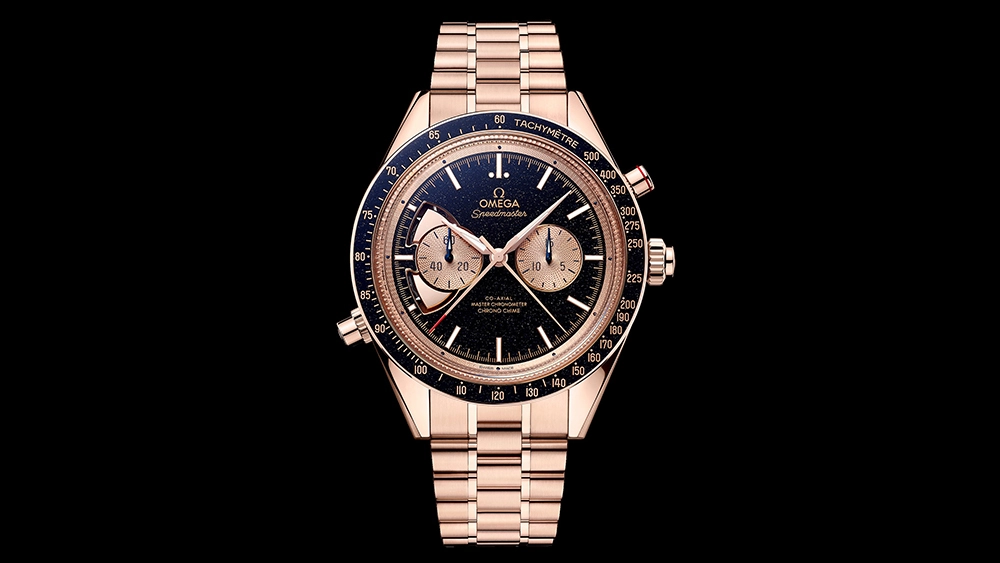
Omega
If all this sounds too esoteric, there’s also the new Speedmaster Chrono Chime. The brand took the 1932 and fit it into a special Speedmaster case, meaning you can chime the time with a more modern-looking watch on your wrist—albeit one made of solid gold. Housed in a 45 mm 18-karat Sedna Gold case moulded after the second-generation CK-2998 Speedmaster, which debuted 60 years ago in 1962, this Speedy features a blue aventurine “Grand Feu” enamel dial that sparkles like the night sky.
With inner bezels and sundials in 18-karat Sedna Gold “acoustic waves” patterns, it features diamond-polished, gold indexes and hands, blued CVD sundial hands, and a red-tipped split-seconds hand. The movement has been rotated 45 degrees from that of its Olympics-themed cousin, resulting in the two hammers being visible at 9 o’clock. Paired with a matching 18-karat Sedna Gold bracelet, the Speedy also features its own walnut presentation box with a special resonance plate and a sapphire display caseback.
Folks will inevitably ask themselves who the end customer is for such a watch, and it’s a fair question. Omega will only be able to complete roughly five movements per year, and the retail for each watch is “upon request”—read: multiple hundreds of thousands of dollars. Of course, such timepieces aren’t conceptualised and built merely to satisfy the most diehard Omega collectors, though certainly, they’ll have first dibs. Rather, they’re constructed in order to prove the watchmaker’s horological prowess.
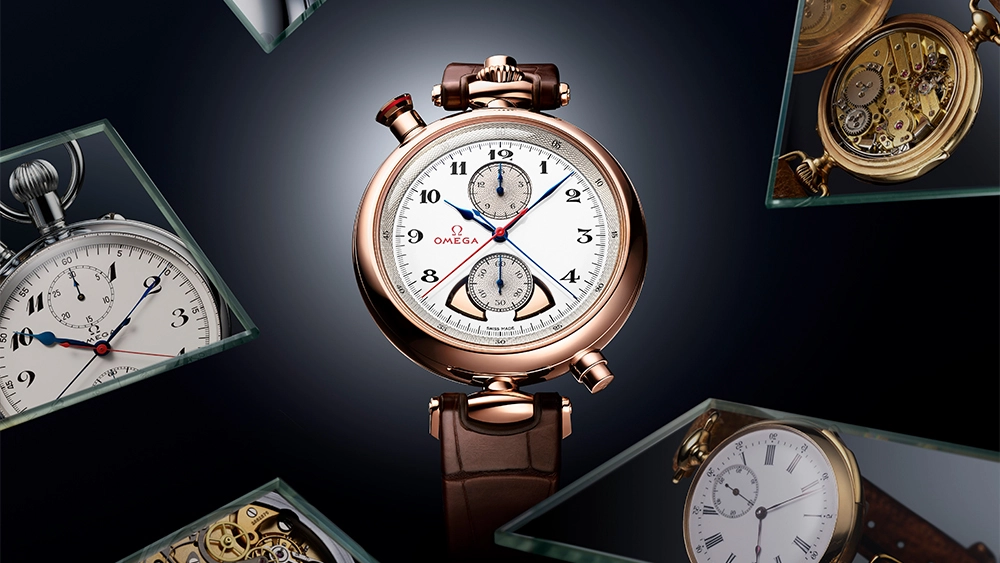
Omega
“I’ve been with Omega for 26 years,” Aeschlimann said. “I remember that there was a moment where we had to reconstruct some of the lines, work on new developments and also, at the same time, think about, ‘What is Omega?’ What is it? And not making just another [vintage-inspired] watch—I would not have accepted making a one-to-one copy of the minute repeater of 1895. It was, for me, creating this incredible magic that you can have with Omega by linking that [history]. That was part of the pressure and part of the discussion…because the mission was clearly Chrono Chime, or nothing.”
Indeed, the company has conceptualised and executed a completely new complication and the results speak for themselves. The resulting watches housing the movement are an exciting testament to Omega’s watchmaking expertise and an interesting new take on its history through an entirely new lens.
Subscribe to the Newsletter
Recommended for you
A New Chapter for Jaeger-LeCoultre’s ‘Reverso Stories’
A special Reverso exhibit arrives in Sydney this week.
By Josh Bozin
May 8, 2024
Watch of the Week: TAG Heuer Formula 1 | Kith
The legendary sports watch returns, but with an unexpected twist.
By Josh Bozin
May 2, 2024
You may also like.
15/05/2024
10/05/2024
You may also like.
Sitting on the Dock of Balmain
Is The Dry Dock Sydney’s Hottest New Pub Renovation?
At its peak, in the late 1890s, Balmain had 55 pubs. They were noisy watering holes that serviced thirsty hordes after a day’s labour at the suburb’s harbourside coal mine and shipyards. Today, Balmain is dotted with charming workers’ cottages set behind picket fences and stolid corner pubs, which have been converted into restaurants and homes.
One such establishment, the Dry Dock on Cameron Street, has undergone a multi-million dollar renovation. As an original public house built in 1857, it remains fixed in a local backstreet and offers a porthole to the suburb’s blue-collar roots.
Locals can still bring their dogs into the front bar, or retreat to the lounge to sit next to a crackling log fire.

The renovation carried out by Studio Isgro and H&E Architects combines rustic touches—like the acid-etched sandstone exterior, exposed brickwork and beams —with elegant light fittings, an incredible sound system and tasteful art. “It has a transportive, escapist quality, where you could be anywhere, or right at home,” says interior designer Bianca Isgro of Studio Isgro, who spent two years on the overhaul. Her team designed a modern gastropub on the site after gutting and stripping the building, which had been neglected for years.
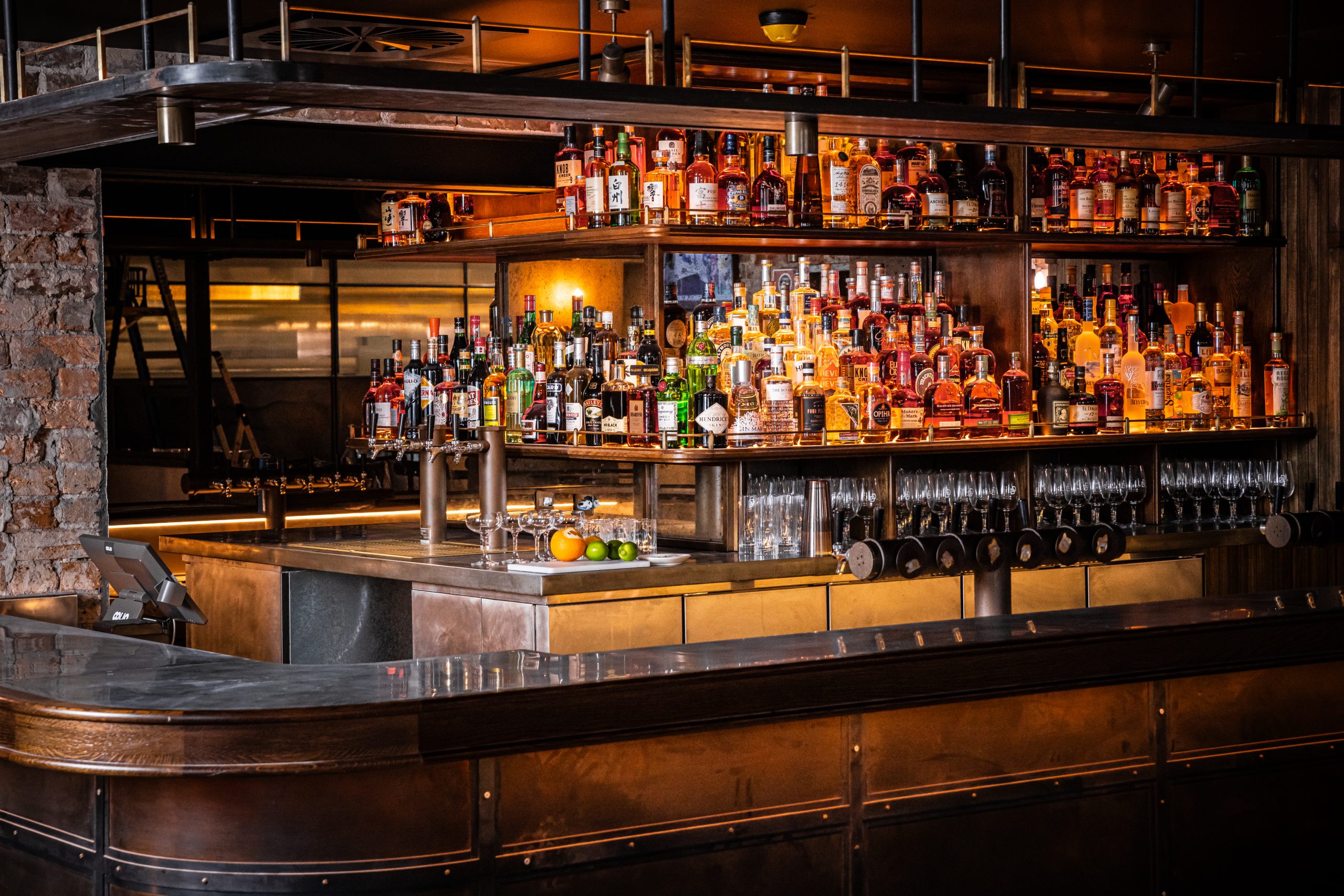
Founder and managing director James Ingram (ex-Solotel and Merivale) has assembled a warm, friendly service team that matches the pub’s character. He says his team has fought hard to preserve the pub’s long-standing connection to residents and to get the mix of old and new right.
“Balmain is home to so many devoted residents who are rightly proud of the suburb’s working-class roots,” says Ingram over a frothy beer in the warm-toned front bar.
“The Dry Dock has been designed to have that timeless feel that stands the test of time.”
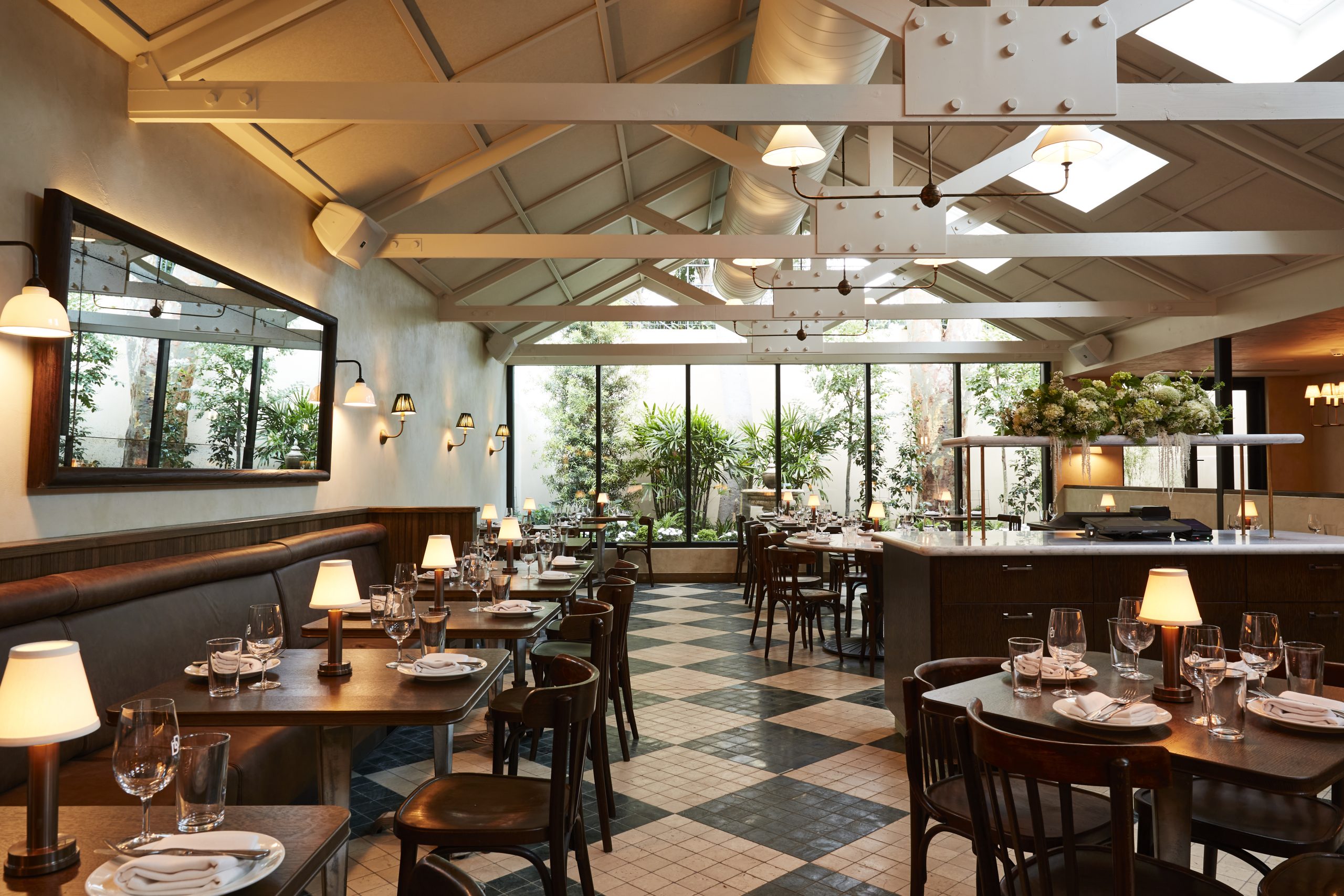
The large open kitchen features an oyster bar and serves French-style fare, delicious sides, and hot desserts. The wine list is on point, with something in every price range and a friendly sommelier doing the rounds.
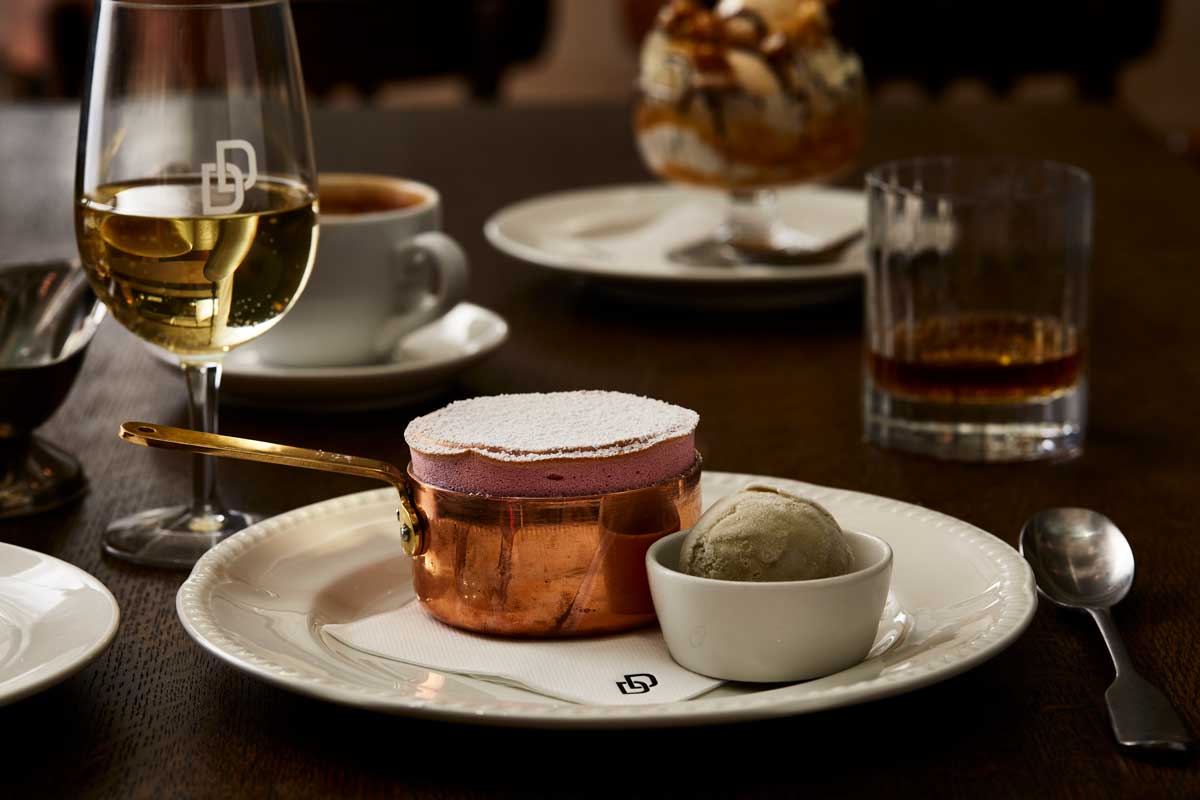
The kitchen is led by seasoned chef Ben Sitton, who previously rattled the pans at institutions including Felix, Uccello and Rockpool Bar & Grill. His kitchen faces a large dining room with unclothed tables, bentwood chairs, tumbled marble floors and exposed trusses that give it a contemporary feel. 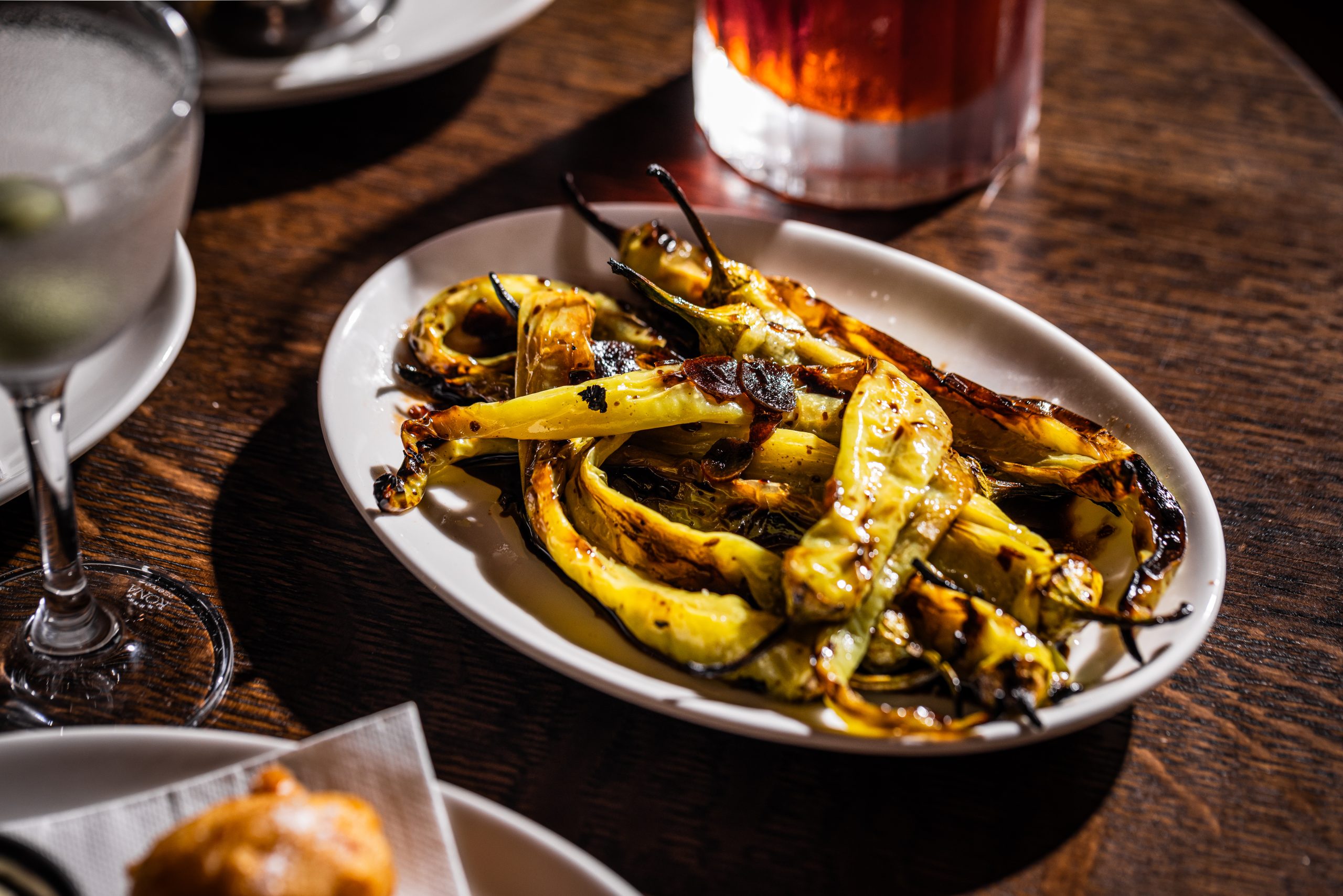
The back of the room overlooks a walled garden, with a giant ghost gum at its centre and views of neighbouring residential fences.
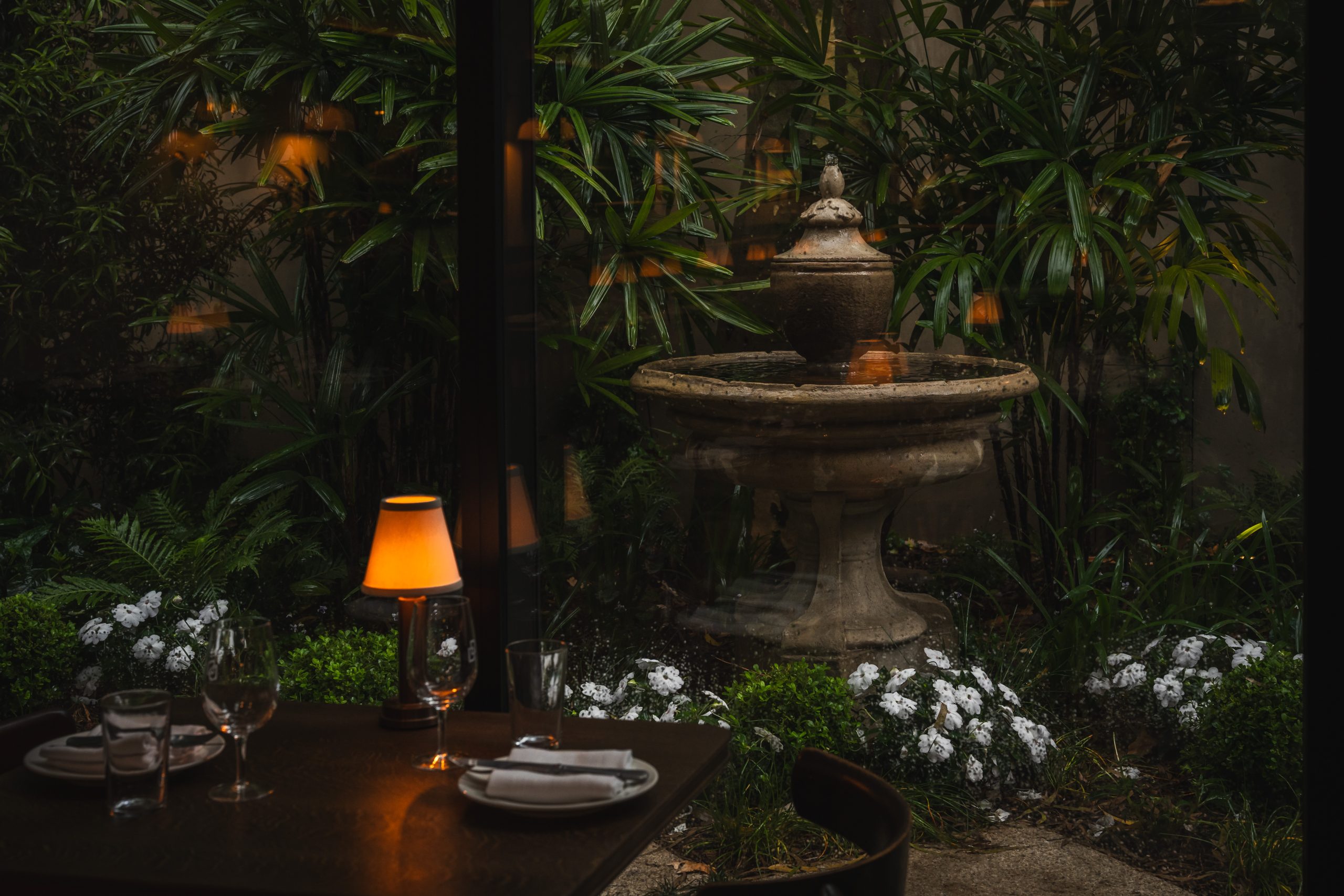
Chef Sitton says his team relishes the opportunity to cook from an expansive modern European repertoire with quality produce. The robust flavours and textures are centred around the smoky quality that comes from Josper charcoal grills, wood-fired ovens, and the rotisserie.
You can order steak frites with charred baby carrots, or baked market fish with a cheesy, potato gratin.
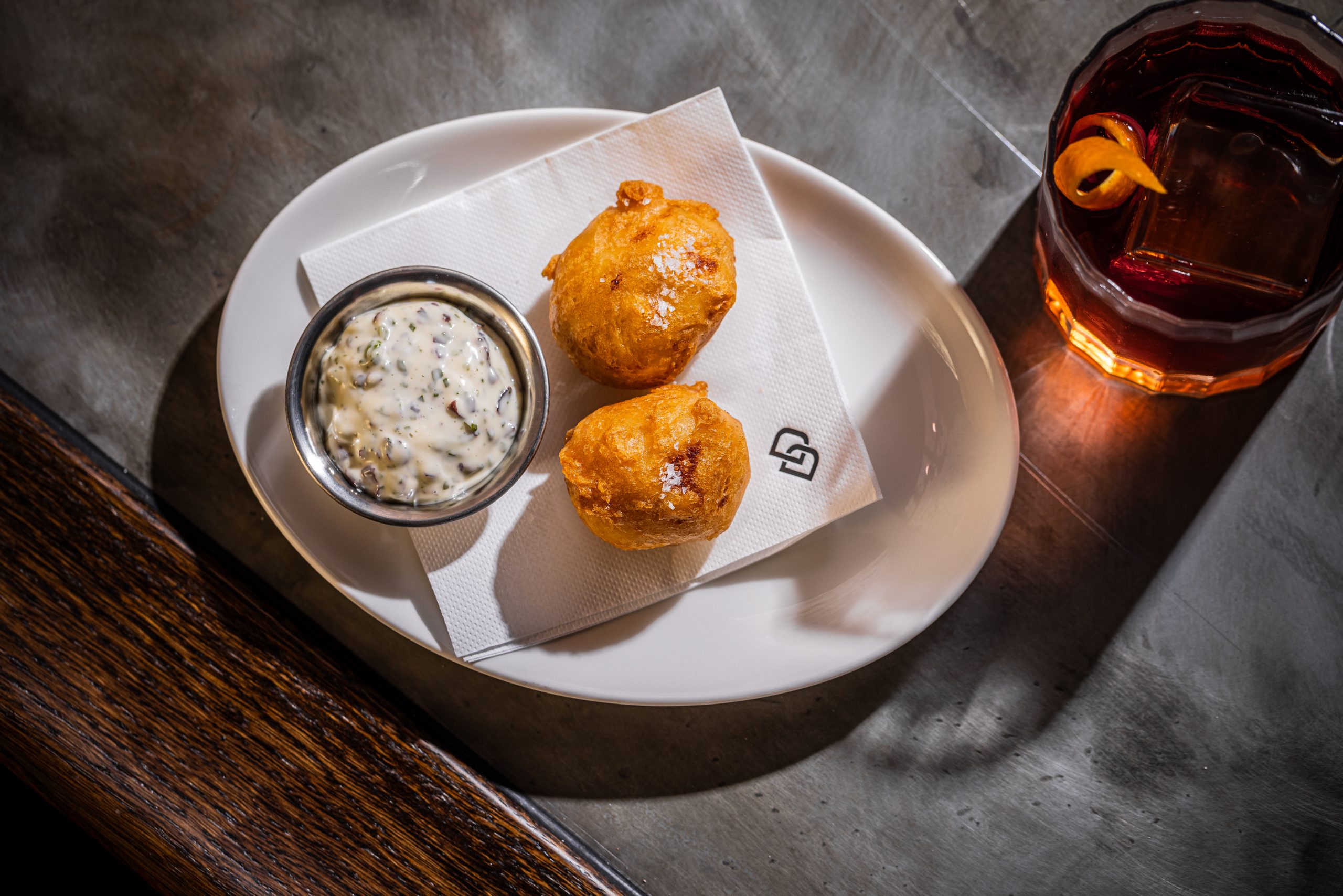
The Peninsula Hospitality Group, the team behind Dry Dock, is now looking to expand its foothold in Balmain by opening at least one other venue.
Visit for the food, stay for the vibe.
The Dry Dock, Public House & Dining Room, 22 Cameron Street, Balmain, NSW 2041. P: 02 9555 1306; drydock.com.au
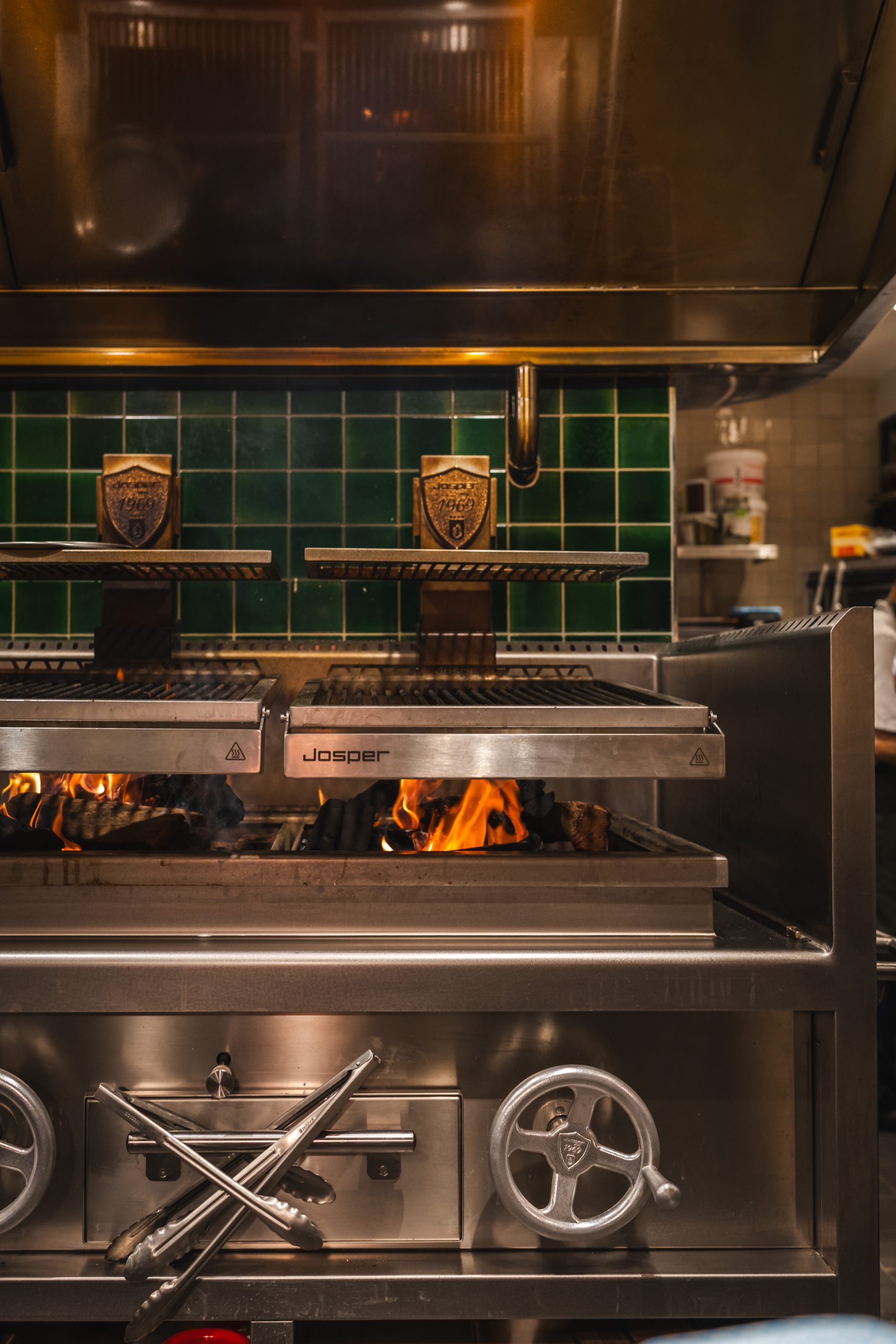
You may also like.
10/05/2024
How To Drink Salon, Guilt-Free with Nick Hildebrandt
Once-in-a-Lifetime Wines By The Glass Come to Melbourne’s Atria and Sydney’s Bentley Restaurant + Bar
Want to eat a succulent starter of pearl meat and smoked lime butter with a glass of 2013 Champagne Salon? Or sink your teeth into chef’s cut Tallow-age beef while sipping a silky glass of 2021 Bass Phillip Pinot Noir?
This month you can.
All through May, wine-loving patrons can order such rare drops by the glass at Michael Greenlaw’s Atria at The Ritz-Carlton in Melbourne, and Brent Savage’s The Bentley Restaurant + Bar in Sydney. Think glasses of Margaux for around $70 and Crozes-Hermitage for under $50.
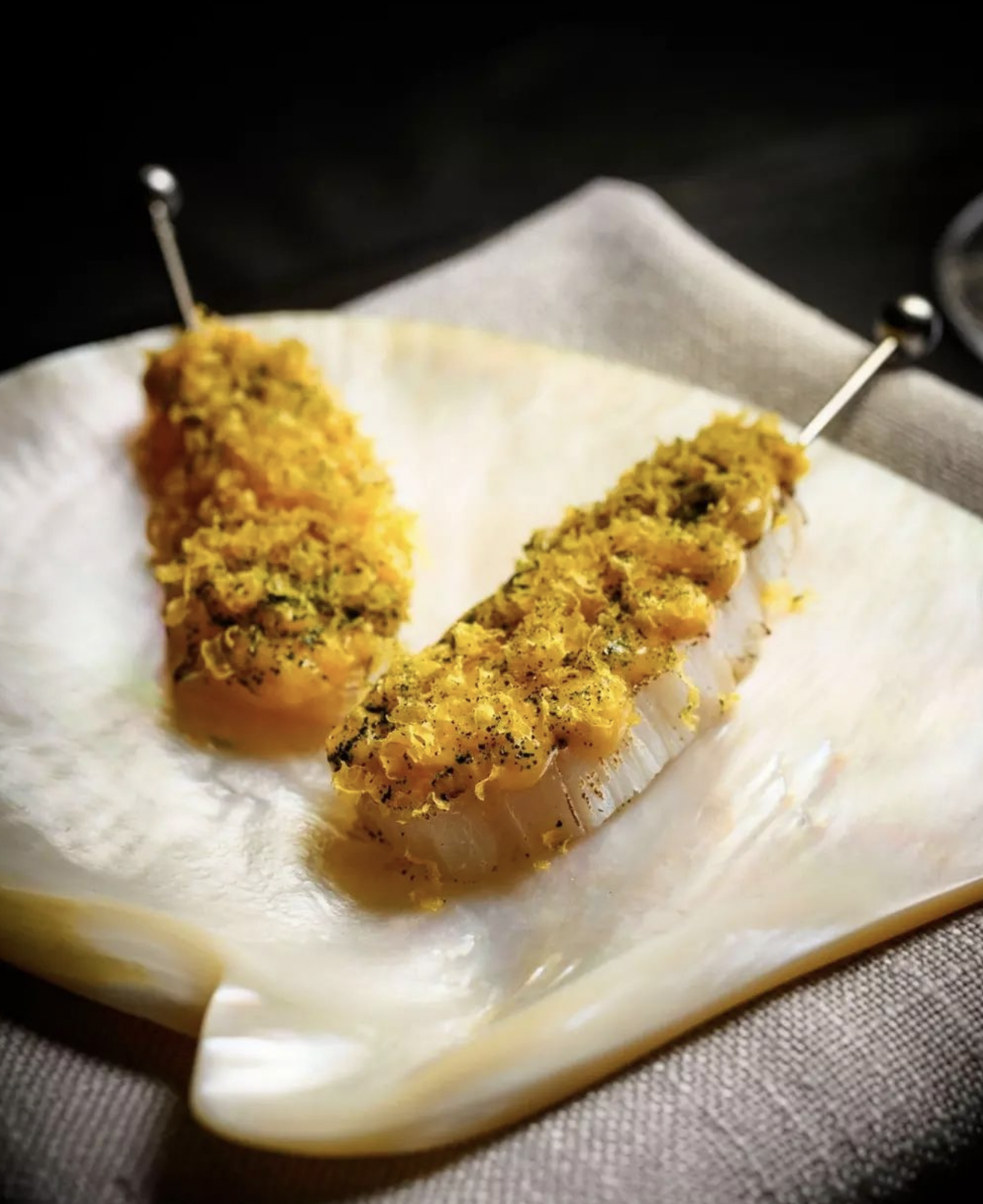
These precious wines that never grace wine lists, let alone by-the-glass menus, are being offered at 50% below the expected by-the-glass price, courtesy of Coravin’s World Wine Tour.
Coravin is the life-preserving wine tech that allows oenophiles to pour vintage wines without removing the cork. The patented needle and gas system allows for the extraction of fine wine, without exposing the precious vintages to ruinous oxygen.
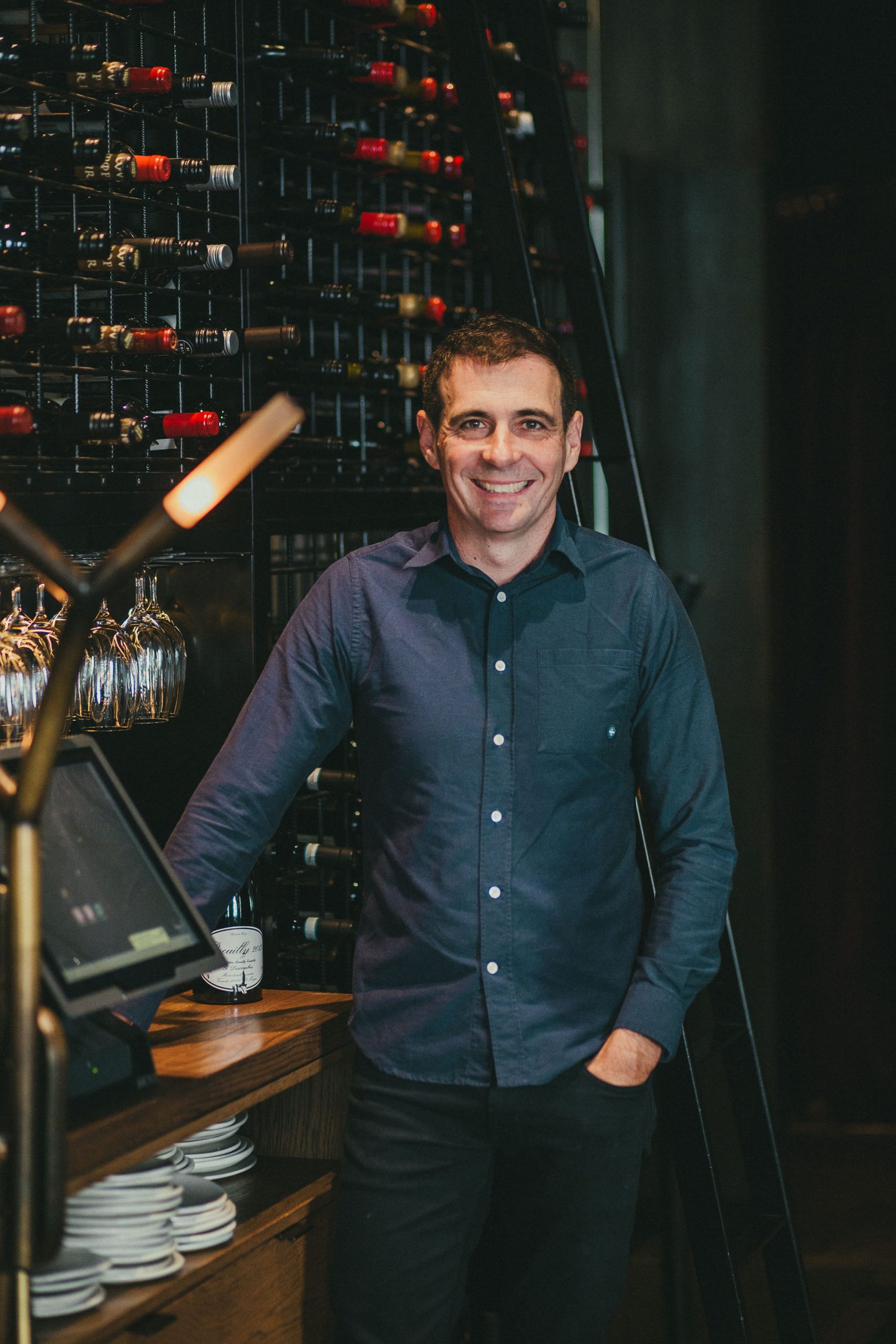
“This is a great initiative,” says owner and sommelier Nick Hildebrandt from his dimly-lit ground floor venue The Bentley Restaurant + Bar..
“This May we have the opportunity to pour by the glass some of the world’s most sought after wines. Especially Champagne Salon, which is extremely rare, and my favourite Champagne of all time,” he says beaming at the thought of serving the scarce blanc de blancs.
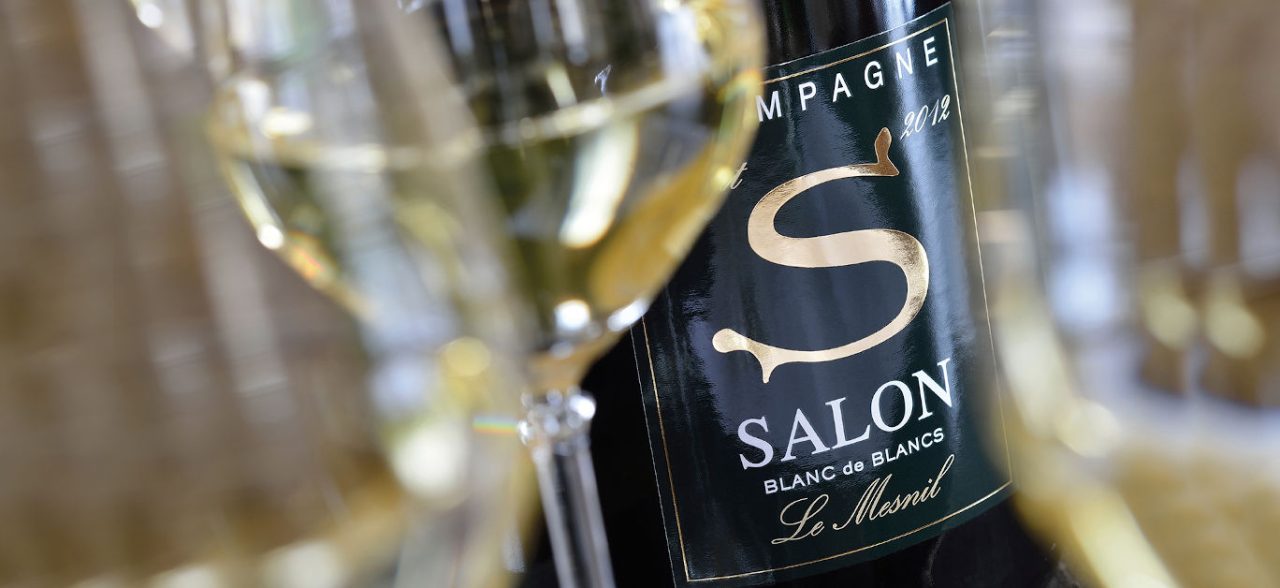
“We have a large following of loyal wine lovers who come to our restaurants and they are super excited to taste these wines at a reasonable price.”
The smiling sommelier continues, “Our guests will have the opportunity to taste a selection of famous and rare wines in pristine condition without spending hundreds or, in some instances, thousands on a bottle.”
Until the end of May, patrons can sample wines from a limited list expertly curated by Coravin, featuring local and international gems. Learn more about Coravin’s World Wine Tour here.
To book visit Atria or Bentley Restaurant + Bar
You may also like.
15/05/2024
10/05/2024
Painted Black
Dion Lee is teaming up with Cho Cho San for an Australian Fashion Week event.
The more things change, the more things stay the same. Nowhere more than in the fashion world. Despite the vagaries of taste, black remains the go-to colour of choice. Fitting, then, that for next week’s Australian Fashion Week, the perennially black-clad media darling Dion Lee has partnered with Pott’s Point Izakaya joint Cho Cho San on a black-themed late-night ramen bar.
Lee, based in New York and not showing in Sydney next week, has worked with the restaurant to create a menu inspired by his inky, haute-industrial aesthetic and favourite flavours.
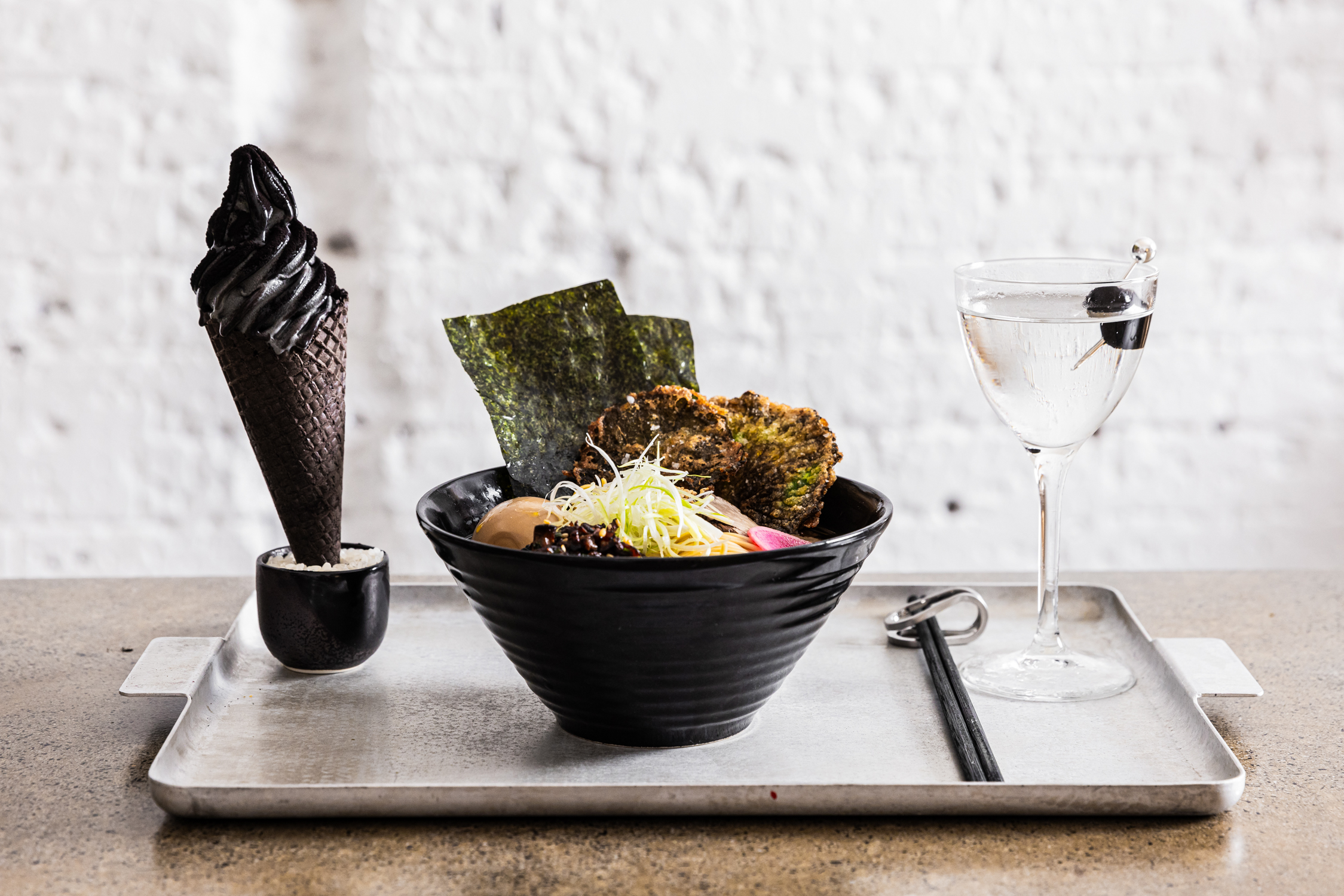
As part of the signature offering ($50pp) guests are offered “Dion’s Martini” on arrival (his take on the classic vodka drink spiked with a black olive, natch), a Tokyo-style shoyu ramen with shitake mushrooms, smoked daikon and crunchy tempura shiso leaf, and a winning black sesame and cocoa soft-serve ice-cream replete with black cone. (Trust us, it tastes infinitely better than it sounds.)
Lee rarely strays outside his fashion lane, but a little blackbirdie tells us to expect an announcement soon about a major new collaboration. Let’s hope it involves black ice cream.
Cho Cho San x Dion Lee: Late Night Ramen Bar
Available from May 13-16, 5pm to late.
Signature set: $50pp includes Dion’s Martini, Tokyo Shoyu Ramen and Black Sesame Soft Serve.
To book click here
You may also like.
A New Chapter for Jaeger-LeCoultre’s ‘Reverso Stories’
A special Reverso exhibit arrives in Sydney this week.
Few watch enthusiasts would be unfamiliar with Jaeger-LeCoultre and its enduring Reverso collection. Since 1931, the Reverso has been celebrated as one of the great dress watches of the 20th century.
In recent years, the watch has gone from strength to strength—in 2023 alone, we received the new Reverso Tribute Chronograph, the impressive Duoface Tourbillon, and the slimmer Reverso Tribute Small Seconds—capturing the imagination of casual observers, collectors, and those looking to scale the horological ladder.
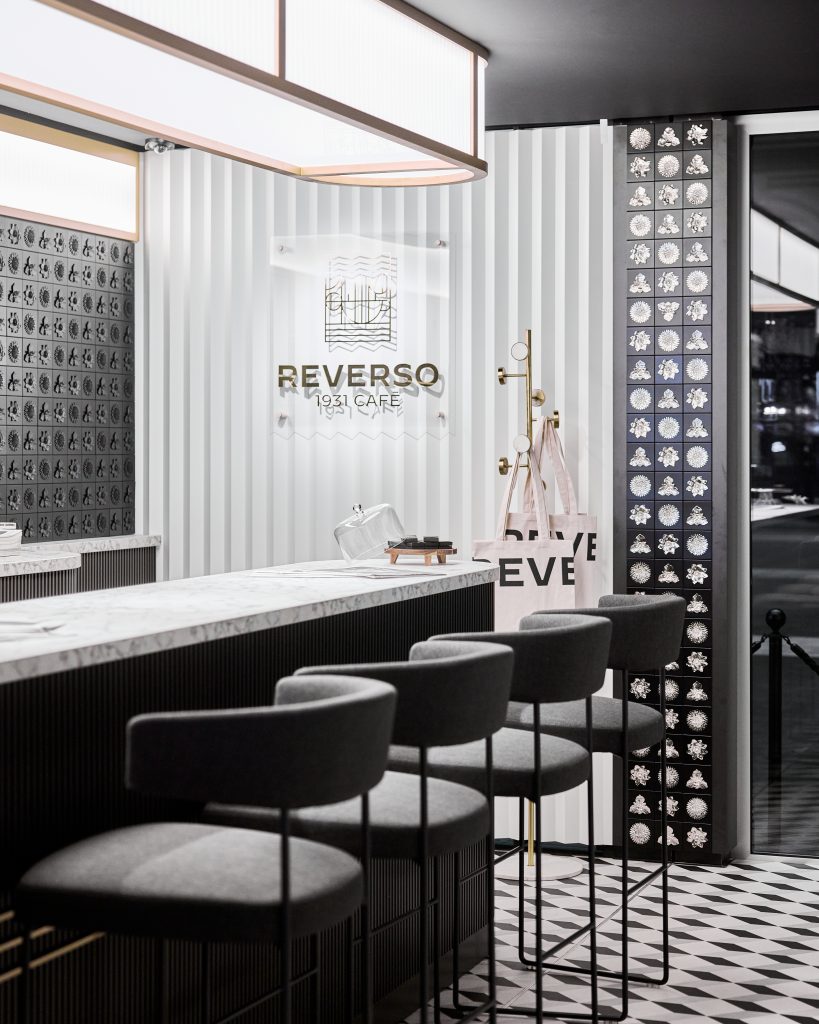
It is also part of the cultural conversation thanks to exceptional branding experiences, such as ‘Reverso Stories’, a travelling experiential trunk show. Jaeger-LeCoultre is again summoning its movable experience to Australia, this time in the heart of Sydney’s CBD. For a limited time, eager fans can glimpse the Reverso collection up close via a multi-sensory exhibition tracing the history of this remarkable timepiece.
Presented in four chapters ( Icon, Style and design, Innovation, and Craftsmanship), the Reverso story will be told through the lens of Jaeger-LeCoultre’s expert watchmakers, who combine nine decades of craftsmanship, inventiveness, and design into one interactive experience.

As a bonus, guests will be privy to a large-scale art installation by Korean artist Yiyun Kang—commissioned by the Maison under its ‘Made of Makers’ programme—and the launch of three exceptional new Reverso timepieces, yet to be revealed. These watches will showcase skills such as enamelling, gold-leaf paillonage, and gem-setting, mastered by the manufacturer’s in-house Métiers Rares (Rare Handcrafts) atelier.
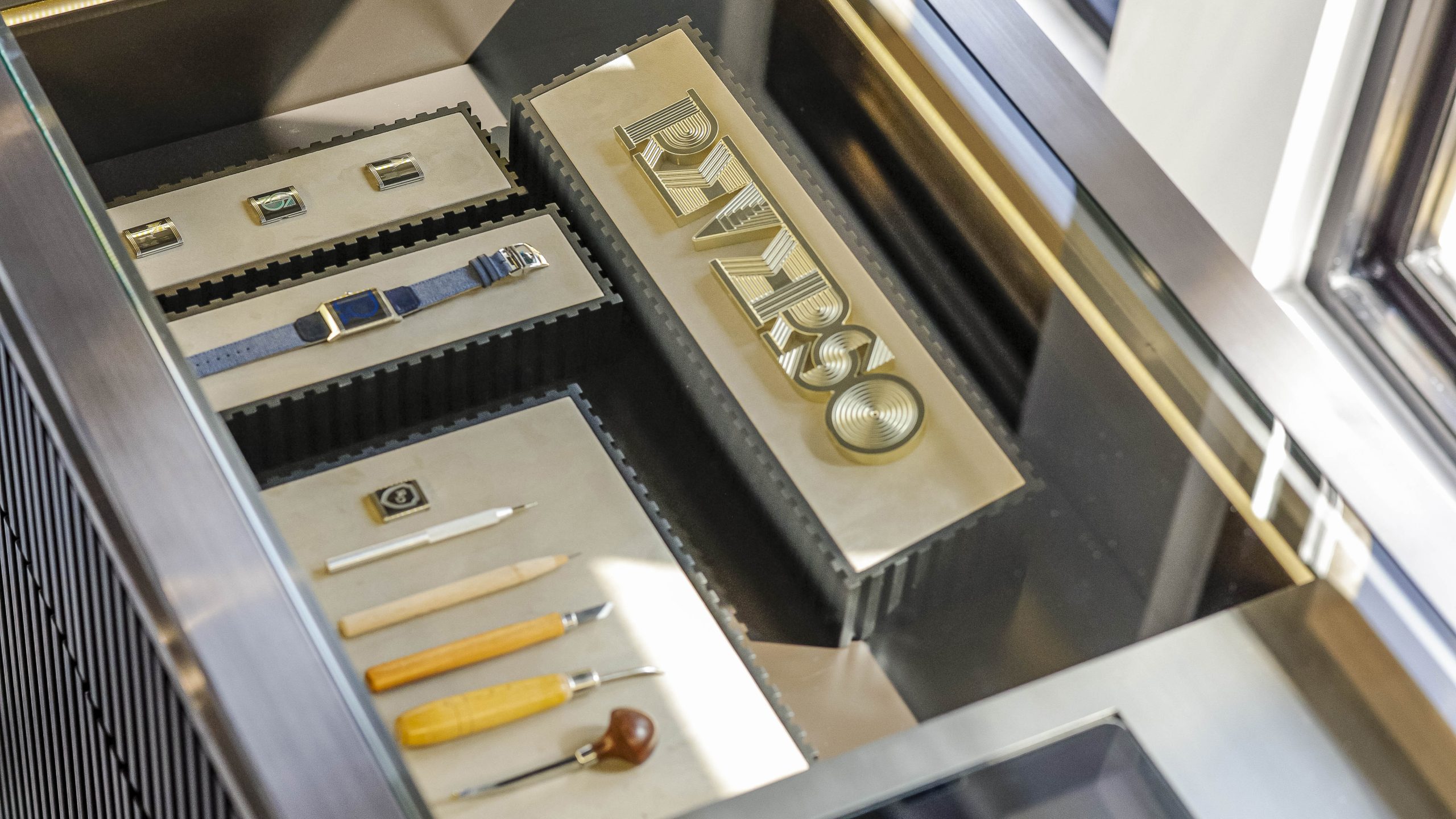
Completing the immersion into the spirit of Art Deco, guests will be able to enjoy a complementary refreshment post-experience at the pop-up Jaeger-LeCoultre 1931 Café.
—
‘Reverso Stories’ will be held in Sydney’s Martin Place from 10–19 May 2024. It will be open daily from 9 a.m. to 7 p.m. (and 5 p.m. on Sundays) and free to the public. Visitors are welcome to book online here or register upon arrival.
For more information, visit Jaeger-LeCoultre.
You may also like.
15/05/2024
10/05/2024
Thanks to Coravin, You Can Order the World’s Best Wines by the Glass
The Coravin World Wine Tour offers foodies exceptional wines by the glass at two Australian restaurants.
Before 2013, the idea of preserving (expensive) wine was a real issue for wine connoisseurs, professional and otherwise. That was until Greg Lambrecht stepped in.
To save exceptional wine from spoiling, the American inventor created the Coravin, a preservation and pouring device that extracts wine from the bottle without compromising its taste or pressure. In other words, if you wanted to enjoy a glass of that Cabernet Sauvignon from Bordeaux you’ve been saving but don’t want to finish the entire bottle, you wouldn’t put a silver teaspoon in the bottleneck and hope for the best. You’d use a Coravin.
“It’s always been my dream to enable wine lovers to drink whatever they want, whenever they want, in the quantity that is right for that moment,” Lambrecht tells Robb Report. “Some nights, that may be just one or two glasses from an incredible bottle of wine or maybe treating yourself to a fine Champagne, and with Coravin you can do this without feeling the pressure to finish the bottle or risk of throwing wine away when it’s past its prime.”
Coravin changed the game and is arguably one of the best advancements in modern Oenology. It has become a mainstay in the wine and hospitality industry globally, with most top-end restaurants and sommeliers utilising of its many iterations to service varied worldly wines.
Today, 11 years later, Coravin celebrates its achievements in the wine industry with an official, inaugural Coravin World Wine Tour. Wine connoisseurs who dream of tasting some of the best wines from around the world at almost 50 percent below the standard price, take heed.
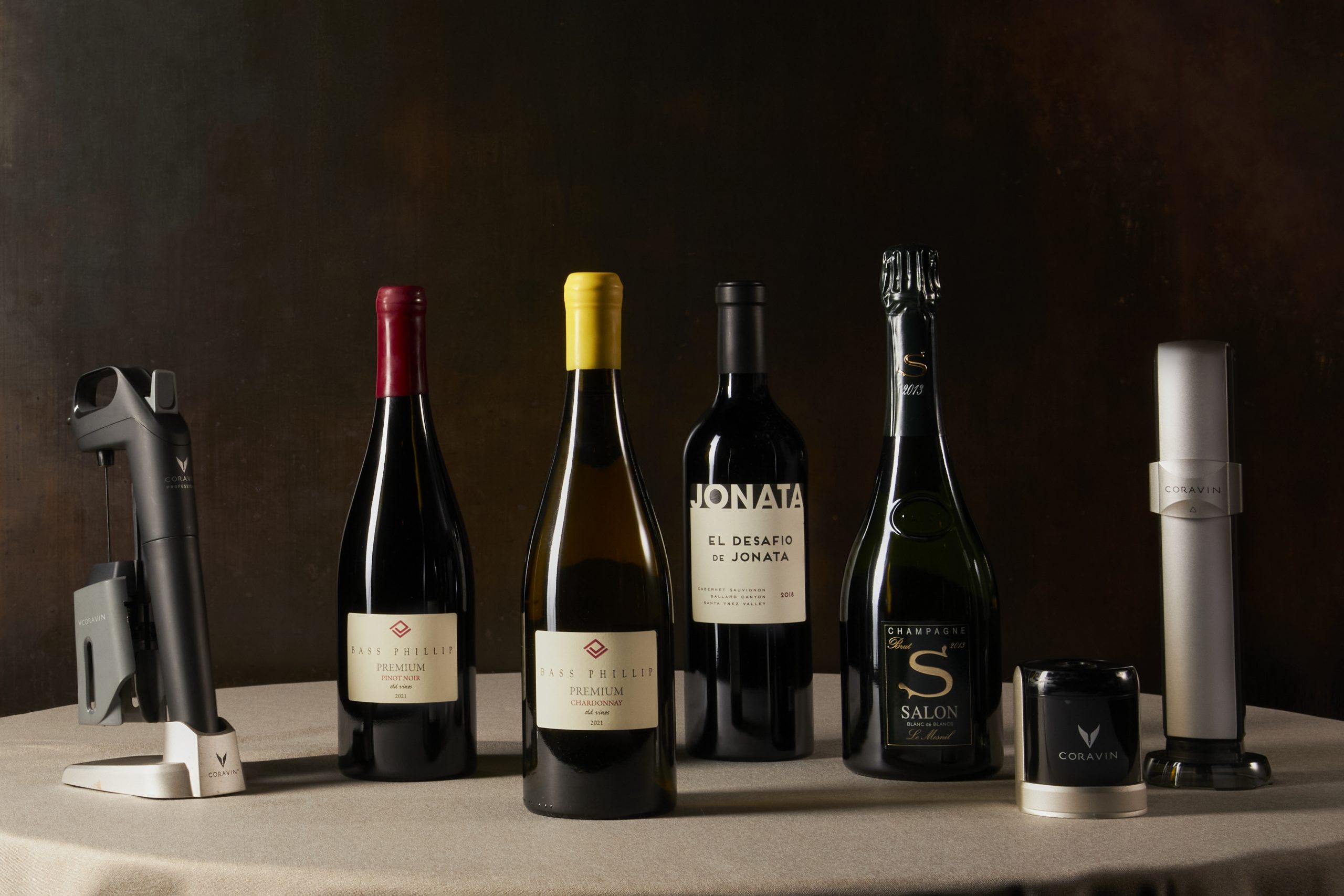
For the month of May, patrons can sample wines from a limited list expertly curated by Coravin. The list features local and international wines of recognition that rarely grace restaurant lists, let alone by-the-glass.
Bentley Restaurant in Sydney and Atria at The Ritz-Carlton Melbourne will be serving customers exceptional, high-profile wines by the glass using the innovative Coravin wine serving system until May 31st. If you fancy indulging in some of the world’s rarest wines, such as Champagne Salon ‘S’ Blanc de Blanc Brut 2013—which retails for $3,800 a bottle and will be served by the glass exclusively at Bentley—or scarcely available Australian wines such as Bass Phillip Pinot Noir 2021 and Bass Phillip Chardonnay 2021, this is your chance.
“A notable trend in the industry is many venues are starting to offer alternative pour sizes, to suit single diners or tables of two better. This is to ensure a more comprehensive wine experience at the venue, without needing to commit to a full bottle or wines that are not available in a half bottle format,” says Sean Lam, head sommelier at Atria.
“Coravin technology enhances the traditional wine-tasting experience and elevates the overall dining journey. At Atria, for example, we can offer side-by-side a Margaret River Chardonnay, Mornington Peninsula Chardonnay and a Premier Cru Chablis, and all three wines are in peak condition.”
Christopher Tan, director at Bass Phillip, adds that it’s a privilege to contribute to Coravin’s first World Wine Tour. “We are talking about wines that would be the envy of any serious wine collection, so it’s outstanding to see these being served in restaurants, let alone by the glass.”

—
In addition to Australia, the Coravin World Wine Tour will also run in the UK, Italy, and France. To experience this special Coravin first-hand, Sydneysiders can make a reservation at Bentley Restaurant + Bar and Melburnians at Atria at The Ritz-Carlton anytime this month.
For more information, visit Coravin.
You may also like.
15/05/2024
10/05/2024






